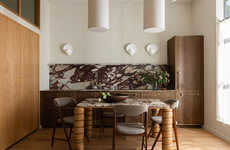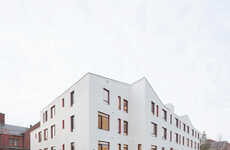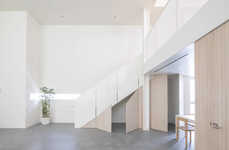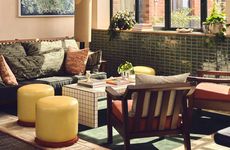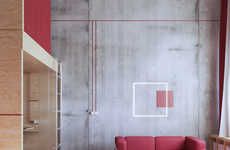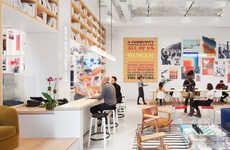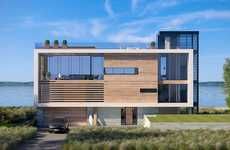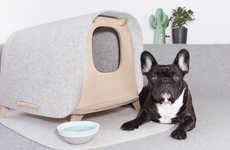
The Noiascape Co-Living Space Was Designed for Millennials
Justin Lam — April 25, 2018 — Art & Design
The Noiascape co-living space is a new co-habitation space in west London that is hoping to encourage Millennials to spend more time at home. Designed by architectural duo Tom and James Teatum, who run the practice Teatum + Teatum, the space was completed for their property development firm Noiascape. This co-living space is the latest property for Noiascape and is a three-bedroom terraced mews house meant solely for rentals.
When designing the Noiascape co-living space, the architects carried out a survey to discover how Millennials use their homes. After discovering that just 17% of the waking day was spent in the home, the design duo decided to make the home more suited for the Millennial market. This involved restructuring the space to create narratives around rituals such as eating, sleeping and washing. The spaces in the Noiascape co-living space were built to be fluid and interconnected, allowing inhabitants to socialize, work and spend alone time without being restricted to their bedrooms.
When designing the Noiascape co-living space, the architects carried out a survey to discover how Millennials use their homes. After discovering that just 17% of the waking day was spent in the home, the design duo decided to make the home more suited for the Millennial market. This involved restructuring the space to create narratives around rituals such as eating, sleeping and washing. The spaces in the Noiascape co-living space were built to be fluid and interconnected, allowing inhabitants to socialize, work and spend alone time without being restricted to their bedrooms.
Trend Themes
1. Fluid Living Spaces - Disruptive innovation opportunity: Designing co-habitation spaces that cater to the changing lifestyles and needs of Millennials, creating more fluid and interconnected living spaces.
2. Redefining Home Usage - Disruptive innovation opportunity: Conducting surveys and gathering data to understand how Millennials utilize their homes, and then redesigning spaces to better suit their needs and preferences.
3. Narrative-based Design - Disruptive innovation opportunity: Creating narratives around daily rituals such as eating, sleeping, and washing to enhance the overall experience and functionality of co-living spaces.
Industry Implications
1. Real Estate - Disruptive innovation opportunity: Developing innovative co-living concepts and properties that cater specifically to the Millennial market.
2. Interior Design - Disruptive innovation opportunity: Incorporating fluid and interconnected design principles into residential spaces to create more adaptable and versatile living environments.
3. Market Research - Disruptive innovation opportunity: Conducting in-depth surveys and data analysis to gain insights into the usage behaviors and preferences of Millennials, informing the design and development of co-habitation spaces.
3.3
Score
Popularity
Activity
Freshness

